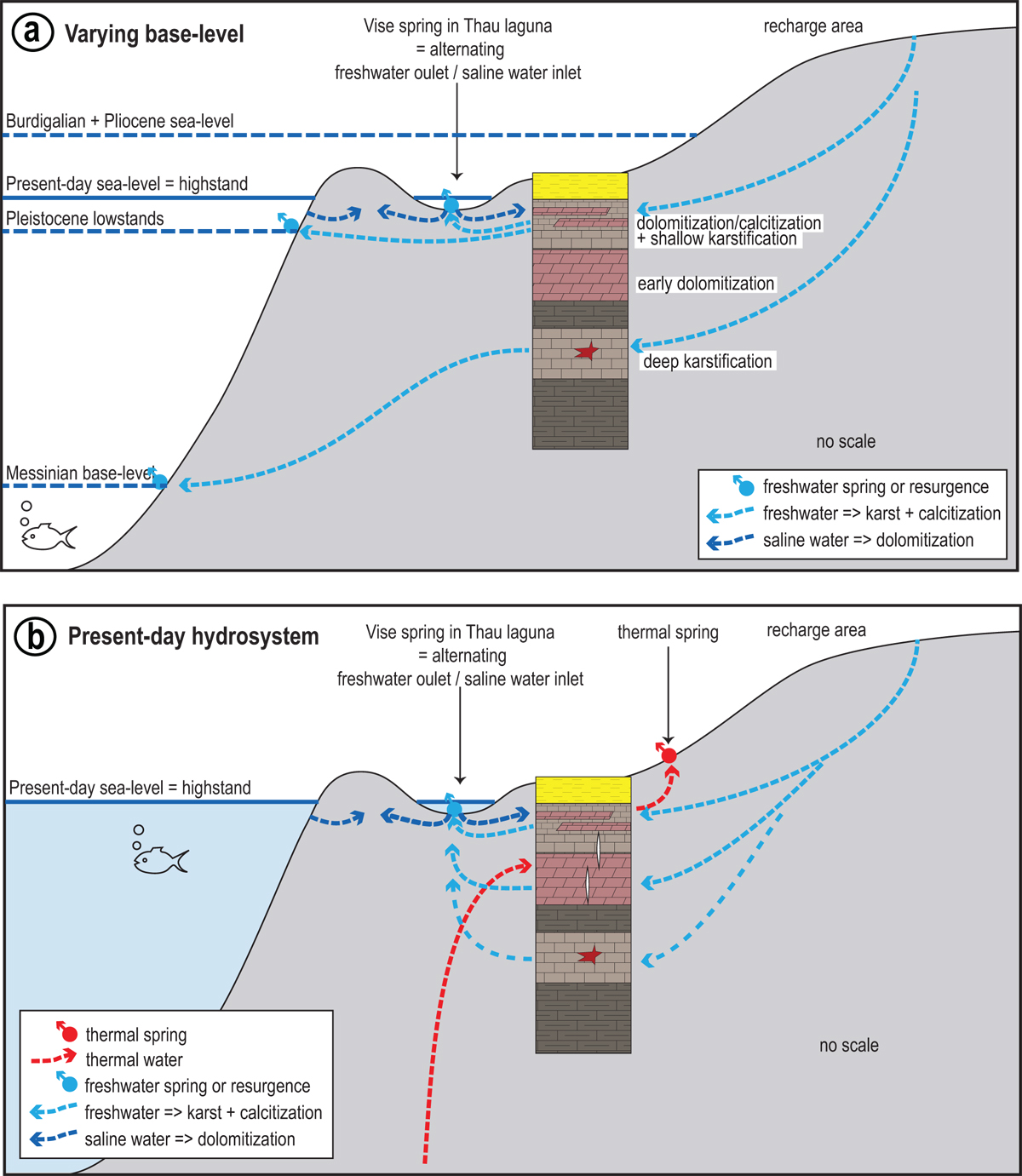Fig. 15

Download original image
a: conceptual model of alternating fresh and saline water circulation in the upper reservoir, responsible for successive episodes of dolomitization and calcitization of the carbonates. The lithological section in the centre corresponds to the studied borehole (same color code as for Fig. 3). Alternance of water circulation through the Vise spring in the Thau laguna and in the underlying reservoir could be tuned to the “inversac” phenomenon or (more likely), to longer period processes such as glacio-eustacy during Pleistocene, or regional tectonically-driven sea-level changes. See text for explanations; b: present-day setting of the Balaruc hydrosystem in relation with the architecture of the reservoir. The karstic waters circulate preferentially in the upper reservoir and through subvertical open crack in the dolomite reservoir; minor flows are recorded in the very deep reservoir. Upward flow of thermal water circulates across the dolomite reservoir through the same subvertical cracks and reaches surface level at natural thermal springs.
Current usage metrics show cumulative count of Article Views (full-text article views including HTML views, PDF and ePub downloads, according to the available data) and Abstracts Views on Vision4Press platform.
Data correspond to usage on the plateform after 2015. The current usage metrics is available 48-96 hours after online publication and is updated daily on week days.
Initial download of the metrics may take a while.




